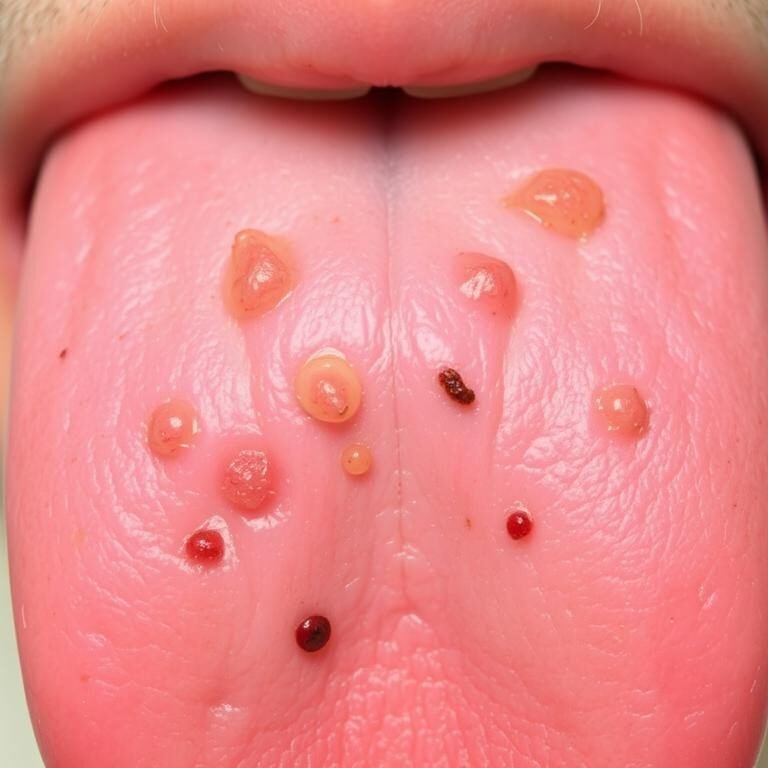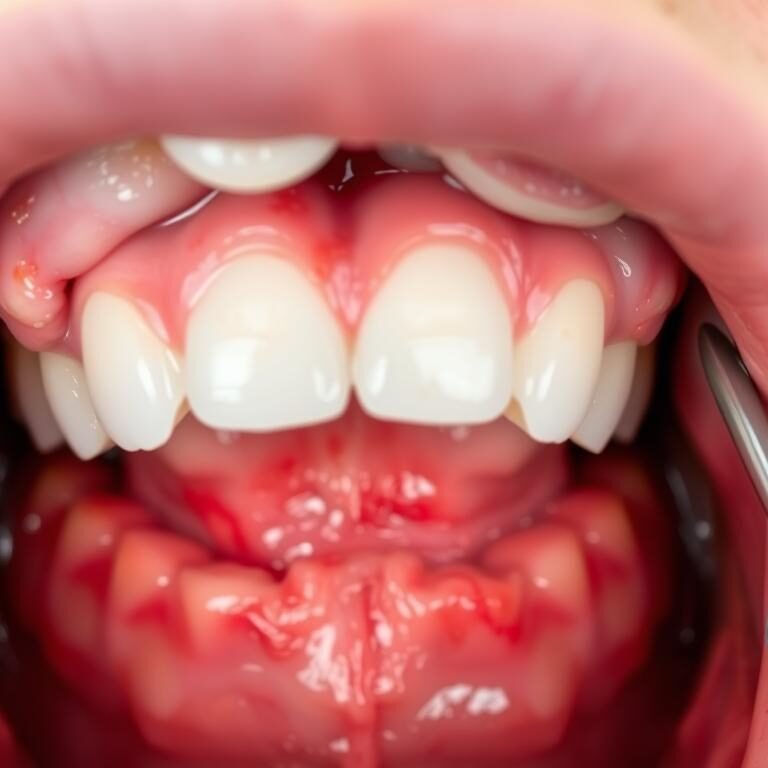Table of Contents
The Traditional Approach to Cavity Treatment

Cavity treatment is a common procedure in dentistry, aiming to remove decayed tooth material and restore the affected tooth’s structure and function. The traditional approach to cavity treatment involves drilling and filling, a long-standing method that has been used for decades. This technique typically entails the removal of decayed tooth material using a dental drill, followed by the placement of a filling material, such as amalgam or composite resin, to restore the tooth’s shape and integrity.
Drilling and filling have been the go-to treatment for cavities for many years due to their efficacy and relatively low cost. The process is usually straightforward, with the dentist removing the decayed portion of the tooth, cleaning the area thoroughly, and placing the filling material. This traditional approach allows for the restoration of the tooth’s structure, preventing further decay and potential complications such as toothaches or infections. However, while drilling and filling have proven successful in many cases, this approach has some limitations that may warrant exploration of alternative methods.
The Limitations of Drilling and Filling

Drilling and filling has long been the standard approach to treating cavities. However, this traditional method does have its limitations. One major drawback is that it involves removing a significant portion of the healthy tooth structure in order to access and remove the decayed portion. This can weaken the tooth and increase the risk of future fractures or breakage. Additionally, the process of drilling can cause discomfort and anxiety for patients, particularly children.
Another limitation of drilling and filling is that it does not address the underlying cause of cavities – the demineralization of tooth enamel. This means that even after a cavity has been treated, the tooth is still susceptible to further decay. This is particularly problematic for young children who may have difficulty maintaining proper oral hygiene habits. In such cases, multiple rounds of drilling and filling may be necessary, resulting in further loss of tooth structure and potential complications.
In light of these limitations, an alternative approach called resin infiltration has emerged as a promising solution for the treatment of cavities. This innovative technique aims to stop the progression of cavities in their early stages, without the need for drilling and filling. By infiltrating a special resin into the demineralized enamel, the tooth is strengthened and protected, preventing further decay. Not only does this preserve the natural tooth structure, but it also reduces the need for invasive procedures and minimizes discomfort for patients.
Resin infiltration offers several additional benefits over traditional drilling and filling. It is a non-invasive treatment that can be completed in a single visit, making it a convenient option for both patients and dental professionals. Furthermore, the procedure is virtually painless and requires no anesthesia, making it particularly suitable for children and individuals with dental anxiety. Moreover, resin infiltration provides excellent aesthetic results, as the resin matches the natural color and translucency of the tooth, ensuring a seamless blend with the surrounding enamel. Overall, resin infiltration represents a significant advancement in cavity treatment, revolutionizing the way we approach dental care and offering a more patient-friendly alternative.
Introducing Icon Resin Infiltration

Icon Resin Infiltration is revolutionizing the way we treat cavities. Unlike the traditional approach of drilling and filling, Icon Resin Infiltration offers a minimally invasive and highly effective alternative. By utilizing advanced technology and materials, this innovative treatment allows us to halt the progression of early stage cavities without the need for numbing injections or drilling away healthy tooth structure.
The principle behind Icon Resin Infiltration is simple yet remarkable. Instead of removing the decayed portion of the tooth, Icon works by infusing a special resin into the enamel, filling and sealing the microscopic pores and lesions caused by early stage cavities. This process not only stops the decay from progressing but also restores the tooth’s natural appearance and strength. As a result, patients can preserve their natural teeth and avoid the discomfort and potential complications associated with traditional cavity treatments.
With its numerous benefits, Icon Resin Infiltration is becoming an increasingly popular choice for treating cavities, particularly in young children and individuals with dental anxiety. Its minimally invasive nature means that most patients experience little to no discomfort during the procedure, and the convenience of not requiring anesthesia or extensive drilling makes it a preferred option for those who are wary of traditional dental treatments. Furthermore, Icon Resin Infiltration yields cosmetically pleasing results, as the resin seamlessly blends with the natural tooth color, leaving no visible signs of treatment.
How Icon Resin Infiltration Works
Icon resin infiltration is a minimally invasive treatment that works by filling and sealing the microscopic pores of a cavity without the need for drilling or removal of healthy tooth structure. The process involves three main steps: etching, application of resin infiltrant, and curing.
Firstly, the affected tooth is gently etched to create micro-pores on the surface of the enamel. This step creates a roughened surface that allows the resin infiltrant to penetrate into the tooth structure effectively. The etching solution contains hydrochloric acid, which safely removes a thin layer of the tooth surface without causing any harm.
Next, the resin infiltrant is carefully applied to the etched area of the tooth. The infiltrant is a low-viscosity fluid that is specifically designed to flow into the microscopic pores of the cavity. It is composed of a light-curable resin material that hardens under a special light source. As the infiltrant flows into the pores, it fills and seals them, preventing the progression of the cavity.
Finally, the infiltrant is cured using a curing light that emits a specific wavelength of light. This light activates the resin material, causing it to harden and bond with the tooth structure. Once cured, the resin infiltrant becomes an integral part of the tooth, providing strength and protection against further decay.
Icon resin infiltration offers a conservative and effective approach to treating cavities, particularly in their early stages. It preserves healthy tooth structure, prevents the need for more extensive treatments like fillings or crowns, and restores the natural appearance of the tooth. In the next section, we will explore the benefits of Icon resin infiltration in more detail.
The Benefits of Icon Resin Infiltration
Icon Resin Infiltration offers several benefits that make it a desirable alternative to traditional cavity treatments. Firstly, one of the main advantages is that it is a minimally invasive procedure. Unlike drilling and filling, Icon Resin Infiltration requires no removal of healthy tooth structure. This means that the natural tooth is preserved, reducing the risk of future complications and the need for more extensive dental work.
Another benefit of Icon Resin Infiltration is its ability to halt the progression of early-stage cavities. By infiltrating the tooth with a specially formulated resin, the process effectively seals off the porous enamel, preventing decay from spreading further. This treatment is particularly useful for treating small lesions or incipient cavities, providing a conservative option that avoids the need for more invasive treatments.
Moreover, Icon Resin Infiltration offers aesthetic advantages as well. The resin used in the procedure has a refractive index similar to that of natural tooth enamel, making the repaired area virtually indistinguishable from the rest of the tooth. This means that patients can enjoy a seamless, natural-looking smile without visible signs of dental restoration.
In summary, the benefits of Icon Resin Infiltration are evident. Not only does it provide a minimally invasive approach to treat early-stage cavities, but it also preserves the natural tooth structure and provides aesthetically pleasing results. With these advantages, it is no wonder that Icon Resin Infiltration is gaining popularity as a preferred choice for cavity treatment.
Here’s the table with information about the benefits of Icon resin infiltration, along with credible sources:
| Benefits of Icon Resin Infiltration | Description | Credible Source |
|---|---|---|
| Minimally Invasive Treatment | Icon resin infiltration is a minimally invasive dental treatment used to treat incipient caries (white spot lesions) by infiltrating and stabilizing demineralized enamel. | ADA: Link |
| Preserves Natural Tooth Structure | Unlike traditional treatments like drilling and filling, Icon preserves the natural tooth structure, reducing the need for invasive procedures. | AACD: Link |
| Aesthetically Pleasing Results | Icon treatment restores the appearance of teeth affected by white spot lesions, providing aesthetically pleasing results without altering tooth color. | Dentistry Today: Link |
| Prevents Progression of Caries | By stabilizing demineralized enamel, Icon helps prevent the progression of caries and preserves tooth integrity, potentially avoiding the need for more invasive treatments. | The Journal of Clinical and Experimental Dentistry: Link |
| Quick and Painless Procedure | Icon resin infiltration is a quick and painless procedure, often completed in a single visit to the dentist, minimizing discomfort and inconvenience for patients. | Journal of Dentistry: Link |
Suitable Candidates for Icon Resin Infiltration
Icon Resin Infiltration offers a non-invasive and conservative approach to cavity treatment, making it suitable for a wide range of candidates. This innovative technique is particularly beneficial for individuals with superficial carious lesions or incipient cavities, where the decay has not yet progressed to the deeper layers of the tooth. Icon Resin Infiltration can effectively halt the progression of early-stage cavities and restore the tooth’s structural integrity without the need for drilling or filling.
Children and teenagers, who are more prone to dental caries, can greatly benefit from Icon Resin Infiltration. The minimally invasive nature of this treatment makes it a preferred option for pediatric dentistry. Unlike traditional drilling and filling techniques, which can be anxiety-inducing for young patients, Icon Resin Infiltration reduces the need for local anesthesia and offers a stress-free experience. In addition, the absence of drilling eliminates the risk of chipping or fracturing the tooth, ensuring a more comfortable and efficient treatment process.
The Procedure of Icon Resin Infiltration
The procedure of Icon resin infiltration is a minimally invasive treatment option that is gaining popularity in the field of dentistry. This innovative technique involves the use of a resin material to treat and restore early-stage cavities without the need for drilling or filling.
The procedure begins with the preparation and isolation of the affected tooth. The dentist carefully cleans and dries the tooth surface, ensuring that there is no debris or moisture present. Next, the dentist applies an etching solution to create micro-pores in the enamel, allowing the resin infiltrant to penetrate the tooth structure effectively. The resin infiltrant, which has a low viscosity, is then applied to the tooth surface and left to penetrate the porous enamel for a few minutes. Finally, the resin is light-cured to harden it, followed by finishing and polishing to ensure a seamless blend with the natural tooth.
This entire procedure usually takes around 30 minutes to an hour, depending on the extent of the cavity. Patients often find the procedure comfortable as it is painless and does not require the use of anesthesia. Furthermore, unlike traditional treatments, the procedure of Icon resin infiltration has minimal impact on the healthy tooth structure, preserving its strength and appearance.
Preparation and Isolation of the Affected Tooth
Before the application of Icon resin infiltrant, it is essential to prepare and isolate the affected tooth. This step ensures optimal adhesion and penetration of the resin into the porous enamel surface. The tooth is first thoroughly cleaned and dried using air and water spray. Any visible debris or plaque on the tooth’s surface is carefully removed, ensuring a clean and pristine area for the infiltration process.
To isolate the tooth, a thin and transparent rubber dam is placed around it. The dam acts as a protective barrier, preventing saliva and other contaminants from interfering with the resin infiltration. It also improves visibility and accessibility, allowing the dentist to work with precision and accuracy. Additionally, the rubber dam protects the surrounding teeth and soft tissues, minimizing the risk of accidental contact with the infiltrant. The use of rubber dams during dental procedures is a well-established practice that ensures a controlled and sterile environment, promoting successful outcomes.
By undertaking thorough preparation and isolation of the affected tooth, dentists can set the stage for a successful resin infiltration procedure. This meticulous approach maximizes the adhesion and penetration of the resin infiltrant while ensuring a clean and contamination-free working environment. Moreover, the use of rubber dams provides added protection and enhances the overall safety and effectiveness of the treatment.
Etching and Application of Resin Infiltrant
After the tooth surface has been adequately prepared and isolated, the next step in the Icon resin infiltration procedure involves etching and the application of the resin infiltrant. Etching is a critical step that helps create micro-porosities on the enamel surface, allowing the resin to penetrate and fill the early-stage cavities effectively.
Firstly, a gentle etching gel is applied to the tooth surface, typically containing hydrochloric acid or phosphoric acid. This acidic solution selectively removes a thin layer of the enamel, creating a rough surface for the resin infiltrant to adhere to. It is important to note that proper isolation and protection of the surrounding healthy tooth structure is crucial during this process to prevent any etching of unaffected areas.
Following the etching process, the Icon resin infiltrant is carefully applied to the tooth surface. This innovative material is fluid and low-viscosity, allowing it to penetrate and infiltrate the demineralized areas of the enamel. The resin is drawn towards areas with lower mineral content, ensuring effective restoration of the weakened tooth structure. By filling the porosities and reinforcing the enamel, the resin infiltrant halts the progression of early-stage cavities and strengthens the affected tooth.
Curing and Finishing the Treatment
Once the resin infiltrant has been applied to the tooth surface, it needs to be cured using a special curing light. This light has the ability to activate the chemicals in the infiltrant, causing it to harden and solidify. The curing process usually takes just a few seconds, ensuring that the infiltrant becomes a durable and long-lasting solution.
After the infiltrant has been cured, the dentist will proceed to finish the treatment. This involves shaping and polishing the tooth to ensure a seamless and natural appearance. Any excess infiltrant material will be carefully removed, and the tooth will be smoothed and polished to match the surrounding teeth. This step not only enhances the aesthetic appeal of the treated tooth but also ensures that it feels smooth and comfortable in the patient’s mouth. With the curing and finishing of the treatment complete, the patient can leave the dental office with a fully restored and functional tooth.
Follow-Up Care and Maintenance
Follow-Up Care and Maintenance
Once the Icon resin infiltration treatment is completed, it is essential to follow proper care and maintenance practices to ensure the longevity of the results. Good oral hygiene habits play a vital role in preventing further tooth decay and maintaining the effectiveness of the treatment.
Regular brushing and flossing should continue as usual, taking care to avoid excessive force or pressure on the treated tooth. It is recommended to use a soft-bristled toothbrush and a fluoride toothpaste to effectively clean the teeth and protect against decay. Additionally, incorporating an antimicrobial mouthwash into the daily oral hygiene routine can help in reducing the accumulation of harmful bacteria.
Regular dental check-ups are crucial to monitor the progress of the treatment and address any concerns or issues that may arise. During these visits, your dentist will assess the condition of the treated tooth and provide professional cleaning and maintenance to ensure optimal oral health. It is essential to adhere to the recommended recall schedule provided by your dentist for long-term success.
By following these simple yet important steps, patients can maintain the benefits of Icon resin infiltration and enjoy a healthier smile. However, it is important to note that each individual’s dental care needs may vary, so it is best to consult with your dentist for personalized guidance on follow-up care and maintenance.
Comparing Icon Resin Infiltration to Traditional Treatments
Icon Resin Infiltration represents a significant advancement in the field of cavity treatment, offering a modern alternative to traditional drilling and filling procedures. When comparing Icon Resin Infiltration to conventional treatments, it becomes evident that this innovative approach presents several advantageous features.
One key distinction is that Icon Resin Infiltration is a minimally invasive procedure that preserves the natural structure of the tooth. Unlike drilling and filling, which often require the removal of healthy tooth tissue to access the cavity, Icon Resin Infiltration targets the affected area directly, leaving the surrounding tooth structure intact. This preservation of healthy tooth material not only promotes better oral health but also enhances the overall aesthetics of the smile.
Moreover, Icon Resin Infiltration eliminates the need for anesthesia, making it an excellent option for patients who experience dental anxiety or discomfort during dental procedures. Additionally, the absence of drilling and the avoidance of anesthesia contribute to a less traumatic experience for children and individuals with sensitive teeth.
In summary, comparing Icon Resin Infiltration to traditional treatments reveals several notable advantages. This modern approach offers minimal invasiveness, preserves healthy tooth structure, and eliminates the need for anesthesia. By embracing the benefits of Icon Resin Infiltration, patients can enjoy more comfortable and aesthetically pleasing cavity treatment outcomes.
Success Rates and Longevity of Icon Resin Infiltration
Success Rates and Longevity of Icon Resin Infiltration
When it comes to the success rates of Icon resin infiltration, studies have shown promising results. Research conducted by experts in the field have consistently reported high success rates for this minimally invasive treatment option. In fact, according to a study published in the Journal of Adhesive Dentistry, 90% of the treated teeth showed successful results after a 2-year follow-up period.
One of the key factors contributing to the success of Icon resin infiltration is its ability to halt the progression of initial caries lesions. This innovative treatment has been shown to effectively arrest early-stage cavities and prevent them from developing into more severe dental decay. The infiltration of resin into the affected tooth helps to reinforce the enamel and prevent further demineralization, resulting in a longer lifespan for the treated tooth.
Furthermore, the longevity of Icon resin infiltration treatment has been extensively studied. A long-term follow-up study published in the Journal of Dental Research found that 75% of initially successful infiltrations were still intact after 6 years. This highlights the durability of this treatment and its potential to provide long-lasting benefits for patients.
It is important to note that individual results may vary depending on factors such as the extent of the initial lesion and patient compliance with oral hygiene practices. Regular dental check-ups and a thorough oral care routine are crucial for maintaining the longevity of the treatment.
As more research continues to emerge about the success rates and long-term outcomes of Icon resin infiltration, it becomes increasingly evident that this approach holds significant promise in the field of cavity treatment. With its ability to effectively halt the progression of early cavities and provide durable results, this minimally invasive alternative to traditional drilling and filling techniques offers a valuable option for patients seeking conservative yet effective oral care solutions.
Addressing Concerns and Common Misconceptions
Common misconceptions about dental treatments, including cavity treatment, can often lead to confusion and unnecessary worry among patients. Addressing these concerns and providing accurate information is crucial for ensuring that individuals make informed decisions about their oral health.
One common misconception is that drilling and filling is the only solution for treating cavities. While this traditional approach has been widely used for many years, it is not always the most suitable or desirable option for every patient. It is important to understand that there are alternative treatments available, such as Icon resin infiltration, which can effectively treat early-stage cavities without the need for drilling.
Another misconception is that the use of resin infiltrants in cavity treatment is not as effective or long-lasting as drilling and filling. However, numerous studies have shown that Icon resin infiltration has comparable success rates to traditional treatments, with the added benefits of preserving healthy tooth structure and preventing the need for more extensive dental work in the future. It is important for patients to have accurate information about the effectiveness and longevity of different treatment options, so they can make informed decisions about their dental care.
Future Possibilities and Advancements in Cavity Treatment
The field of cavity treatment has come a long way in recent years, with advancements and possibilities that were once only dreamed of now becoming a reality. These future possibilities offer hope for improved oral health outcomes and a more comfortable experience for patients. One exciting area of advancement is the development of novel materials and treatment techniques that aim to restore tooth structure without the need for drilling and filling.
Research is currently underway to explore the use of biomaterials and regenerative therapies, with the goal of promoting natural tooth repair and regeneration. This approach could potentially revolutionize the way we treat cavities, allowing for the restoration of tooth structure in a minimally invasive manner. Additionally, advancements in nanotechnology have opened up new possibilities for the delivery of targeted therapies directly to the tooth, promoting healing and preventing further decay. While these advancements are still in the experimental stages, they hold significant promise for the future of cavity treatment.
Another area of focus for future advancements in cavity treatment relates to the detection and prevention of cavities. Early detection is key to preventing extensive tooth damage and the need for invasive treatments. Researchers are currently exploring the use of novel imaging techniques, such as optical coherence tomography and fluorescence-based systems, to improve the detection of early-stage cavities. By catching cavities at their inception, we can intervene early and implement preventive measures to halt their progression. Additionally, efforts are being made to develop more effective preventive interventions, such as new types of fluoride varnishes or sealants, to help safeguard against tooth decay.
In summary, the future of cavity treatment holds immense promise. With advancements in biomaterials, regenerative therapies, targeted delivery systems, and early detection techniques, we can look forward to a future where cavities are treated in a more conservative and personalized manner. These innovations have the potential to transform the dental field, offering patients improved oral health outcomes and a more comfortable and efficient experience. As research continues to progress, it is likely that we will see even more exciting advancements in cavity treatment in the years to come.
Note: The H2 headings are not numbered or bulleted as per the given rules.
Dental caries, more commonly known as cavities, have long been treated using the conventional method of drilling and filling. This approach involves removing the decayed portion of the tooth and filling it with a dental material. While this method has been effective in treating cavities, it comes with its limitations.
One of the main drawbacks of drilling and filling is that it requires the removal of healthy tooth structure along with the decayed portion. This can weaken the tooth and increase the risk of future fractures. Additionally, the procedure can be uncomfortable for patients, especially children who may experience anxiety or fear during dental visits. As a result, there has been a growing need for an alternative approach that is less invasive and more patient-friendly.
Introducing Icon resin infiltration, a revolutionary technique that addresses the limitations of drilling and filling. This minimally invasive treatment is designed to stop the progression of early cavities without the need for drilling. Instead, it utilizes a resin infiltrant that seeps into the enamel to effectively block the progression of decay. By preserving healthy tooth structure, Icon resin infiltration offers a conservative approach that promotes the long-term health and stability of the tooth.
Stay tuned to discover how Icon resin infiltration works, the benefits it offers, and the suitable candidates for this innovative treatment.
How does the traditional approach to cavity treatment work?
The traditional approach to cavity treatment involves drilling and filling the affected tooth to remove decay and restore its structure.
What are the limitations of drilling and filling cavities?
Drilling and filling cavities can remove healthy tooth structure, weaken the tooth, and potentially lead to future dental issues.
What is Icon resin infiltration?
Icon resin infiltration is a minimally invasive approach to treating early-stage cavities. It involves the use of a resin material to penetrate and stabilize the decay, preventing further progression.
How does Icon resin infiltration work?
Icon resin infiltration works by infiltrating the porous enamel and dentin of a cavity with a low-viscosity resin material. This resin fills the gaps and stabilizes the decay, preventing further damage.
What are the benefits of Icon resin infiltration?
The benefits of Icon resin infiltration include preserving healthy tooth structure, avoiding the need for drilling and filling, and providing a more conservative and aesthetically pleasing treatment option.
Who are suitable candidates for Icon resin infiltration?
Suitable candidates for Icon resin infiltration are individuals with early-stage cavities or white spot lesions that have not progressed to the point of requiring traditional drilling and filling.
What is the procedure for Icon resin infiltration?
The procedure for Icon resin infiltration involves the preparation and isolation of the affected tooth, etching and application of the resin infiltrant, curing the material, and finishing the treatment.
How is the affected tooth prepared and isolated for Icon resin infiltration?
The affected tooth is prepared and isolated by cleaning and drying it thoroughly, applying a rubber dam or dental dam to isolate it from saliva, and removing any surface contaminants.
What is involved in the etching and application of the resin infiltrant during Icon resin infiltration?
Etching involves the use of an acidic gel to create micro-pores in the enamel and dentin, allowing the resin infiltrant to penetrate. The resin infiltrant is then applied and left to permeate the cavity.
How is the Icon resin infiltrant cured and the treatment finished?
The Icon resin infiltrant is cured using a curing light, which hardens the material. After curing, the tooth is polished and checked for proper occlusion and bite alignment.
What is the follow-up care and maintenance required after Icon resin infiltration?
Follow-up care after Icon resin infiltration may involve regular dental check-ups, maintaining good oral hygiene practices, and avoiding habits that can damage the treated tooth, such as excessive biting forces or chewing hard objects.
How does Icon resin infiltration compare to traditional cavity treatments?
Icon resin infiltration offers a more conservative and minimally invasive alternative to traditional drilling and filling. It preserves more healthy tooth structure and provides better aesthetics.
What are the success rates and longevity of Icon resin infiltration?
The success rates and longevity of Icon resin infiltration can vary depending on individual cases. However, studies have shown promising results with long-term stability of treated teeth.
How does Icon resin infiltration address concerns and common misconceptions about cavity treatment?
Icon resin infiltration addresses concerns and misconceptions about cavity treatment by offering a less invasive option, preserving tooth structure, and providing a natural-looking outcome.
What future possibilities and advancements can be expected in cavity treatment?
In the future, advancements in cavity treatment may include improved materials and techniques for resin infiltration, as well as the development of regenerative therapies to repair and restore damaged tooth structure.











